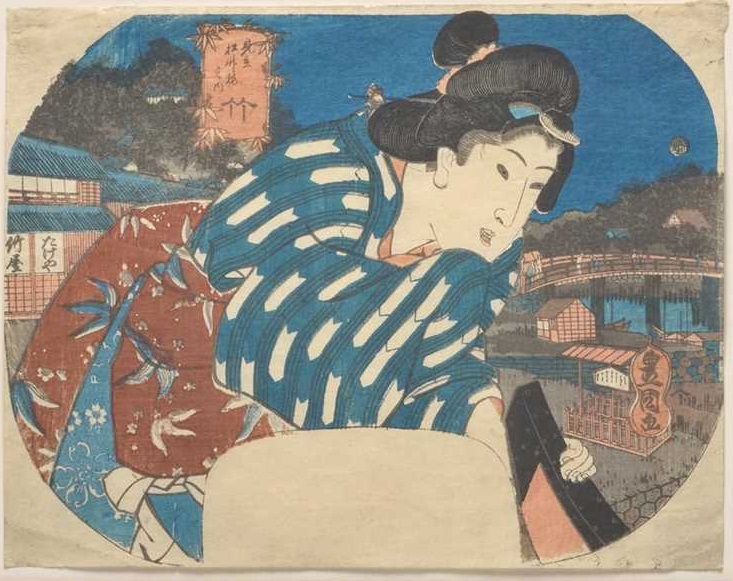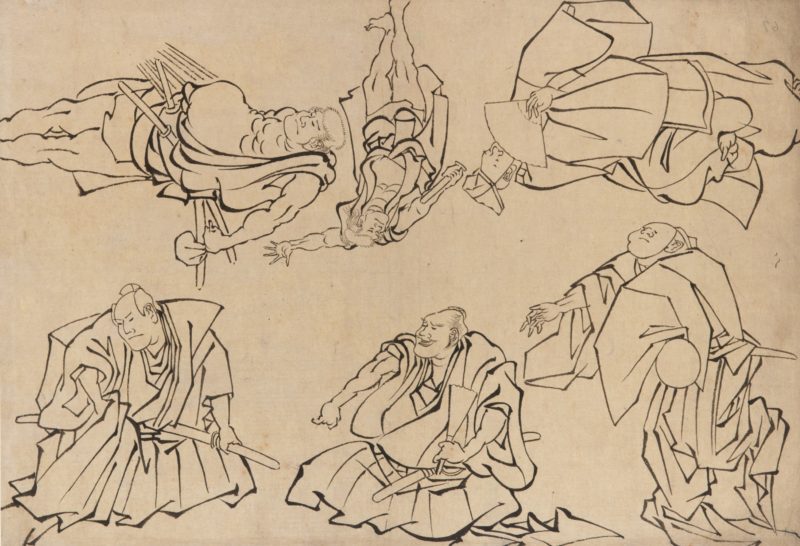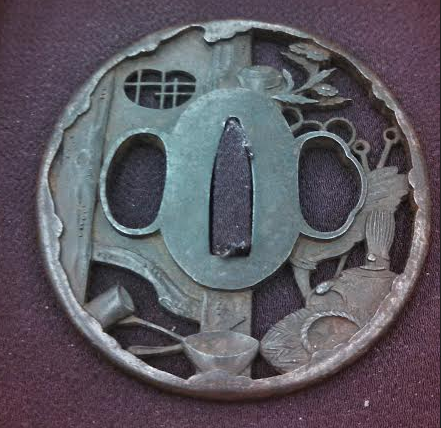Harrison Schley, Ph.D., is a member of the International Society of Appraisers and a specialist in fine and decorative Asian art and Judaica. In this interview, we discussed one of his areas of expertise: Japanese art. Harrison spoke with Fine Art Shippers about the unique characteristics of this art, the concept of authorship in pre-modern East Asia, the appraisal standards, and the challenges related to authenticating Japanese art.
If You Want to Collect Japanese Art: Interview with an Appraiser
Please tell us about your background. What initially drew you to Japanese art history, and how has your focus evolved over time?
Harrison Schley: From a young age, I have had a fascination with art and antiques. Antique shops were my favorite places to visit, and I admired the objects and the meaning they got imbued with over the years. During my college years, I had the opportunity to study abroad in Japan and was introduced to the tea ceremony. I was captivated by the decorative arts and the concept of "ichi-go ichi-e," the unrepeatable nature of a moment. I saw parallels between this idea and Rabbi Abraham Joshua Heschel's concept that events imbue objects with meaning. The appreciation for how objects create special moments in both Jewish and Japanese cultures left a significant impact on me and led me to study these cultural traditions. It's incredible how objects, such as a tea bowl or kiddush cup, can carry a special significance throughout time.

You have researched at the National Museum of Asian Art, the Smithsonian Institution, and the Asian collections at the Philadelphia Museum of Art. Could you share some of the most exciting discoveries you have made during your work?
My research explores the relationships between humans and the objects they create, rather than focusing solely on the objects themselves. I have studied various materials, such as ceramics, metalwork, paintings, prints, and lacquerware, all with the aim of understanding how they relate to human interactions.
For instance, my doctoral research explored the marketing of ceramics during the Edo period. I discovered that artisans did not work alone, but collaborated with a network of patrons and merchants when creating their pieces that are now considered a significant part of Japanese art history.
I also studied screens that depicted the arrival of Dutch and Portuguese merchants in Japan. While these items had references to Asian mythology, they also depicted the slave trade in Japan. Through analyzing these paintings, I explored the process of enslavement and traced its connections between Japan, Macao, East Asia, India, and East Africa.
And another example I would like to share. During my research on Japanese ceramics from the early 19th century, I discovered that despite the common perception that ceramics production was dominated by men, I found that women played a crucial role in every stage of the process, including painting, forming, preparing clay, and creating wares. Although men typically handled customer interactions at the front of the shop, women were not confined to administrative tasks and often worked under the names of their male colleagues.
How would you characterize the Asian art market today? How do you approach it as an appraiser?
The Asian art market is generally stable, but certain segments have experienced remarkable growth in recent years. One such area is the market for Japanese woodblock prints, which has seen significant increases in value, particularly for high-quality prints. This trend was demonstrated at a recent Christie's auction, where Hokusai’s famous print, The Great Wave, was expected to fetch between $500,000 to $700,000 but ended up selling for a staggering $2.25 million hammer price!
Asian art encompasses a vast array of objects and artistic styles. One distinctive feature is the emphasis on decorative arts and three-dimensional objects such as ceramics, lacquerware, and metalwork, which contrasts with the focus on two-dimensional paintings and sculptures in Europe and America. As an appraiser in this field, I find it fascinating to work with such a diverse range of objects, from monumental pieces to small and intricate ones.
My work often involves identifying seals and signatures in Asian art, which is often challenging. While signatures are personal expressions, seals are sometimes viewed as monotonous and impersonal. However, seals have varied in style and significance throughout history, and an artist's choice of seal can provide a researcher with a lot of information about the makerʻs historical, social, and artistic context.

What are some of the common challenges of authenticating Japanese art?
In the 18th and 19th centuries, Japanese copyright laws were not well-developed, leading to the production and sale of unauthorized copies. This practice decreased the worth of the prints. Moreover, in the 20th century, highly-detailed reproductions were created using original techniques and Japanese washi paper, complicating the authentication process for non-experts. So I highly recommend that collectors seek the assistance of a qualified appraiser to establish the authenticity of their Japanese print collection. Although these prints may still be aesthetically pleasing, their real value can only be determined by a professional who is capable of accurately identifying and verifying them.
What was the attitude toward copyright in Japanese society in the 19th century? Did the Japanese perception of the author differ from the Western concept?
In pre-modern East Asia, the concept of authorship differed from that in Europe. For instance, in Japan and China, there is the term "utsushi" sometimes translated as “copies with a twist.” Artists would create a piece in the style of an earlier artist as a tribute, without intending to deceive others into thinking it's an original work. This can pose difficulties for modern scholars trying to authenticate and date a piece. For example, in a recent auction, an item was presented as a 17th-century work, but it turned out to be a 19th-century piece made in the style of an earlier period. So It requires a high level of expertise to identify the subtleties and nuances that differentiate a copy from an original.

So, how can you distinguish between an original, authenticated print and an unauthorized copy? What aspects do you look into?
When authenticating prints, key factors to consider include the correct size and sharpness of lines, as well as matching the scale of the print to that of the original. Over time, woodblock lines would wear down and produce less precise prints. Additionally, even high-quality Edo-period copies often contain incorrect details. To establish the origin and value of the piece, an authenticator thoroughly examines all of these aspects.

Could you briefly outline the main principles of the Uniform Standards of Professional Appraisal Practice?
The Uniform Standards of Professional Appraisal Practice are a formal set of guiding principles that govern the appraisal of both real estate and personal property. In the United States, these standards are established by a government-sanctioned nonprofit organization called the Appraisal Foundation.
USPAP provides clear guidelines and rules for professional appraisal practice, including five key rules: the ethics rule, which requires appraisers to be ethical and maintain confidential records; the record-keeping rule, which outlines how long appraisers must retain their work records; the competency rule, which set certification standards; the scope of work rule, which requires appraisers to clearly delineate the focus and scope of the project throughout the appraisal and in the appraisal report; and the jurisdictional exception rule, which indicates that local law takes precedence over USPAP in rare cases where they contradict the guidelines set out in USPAP.
How do you ensure that your appraisals adhere to USPAP?
To ensure compliance with USPAP, all appraisals must begin with a proper analysis and clear description of the item being valued. The report should include a comprehensive explanation of relevant facts regarding how conclusions were made, such as a clear description of any comparable items from the market and their relevance to the appraised piece. Lastly, the report must provide a clear account of the final results, opinions, and conclusions, communicated to the client either orally or in written form.
Interview by Inna Logunova Images in the order of appearance: 1. Utagawa Toyokuni. Courtesan and Maid. Licensed under CCreative Commons (CC0 1.0) 2. Harrison Schley 3. Woodblock print by Utagawa Kunisada from a collection Harrison Schley helped sell. Published with permission from the owner 4. Katsushika Hokusai. Kabuki actors. Licensed under Creative Commons (CC0 1.0) 5. Sword guard (Tsuba) from Harrison Schley's private collection
